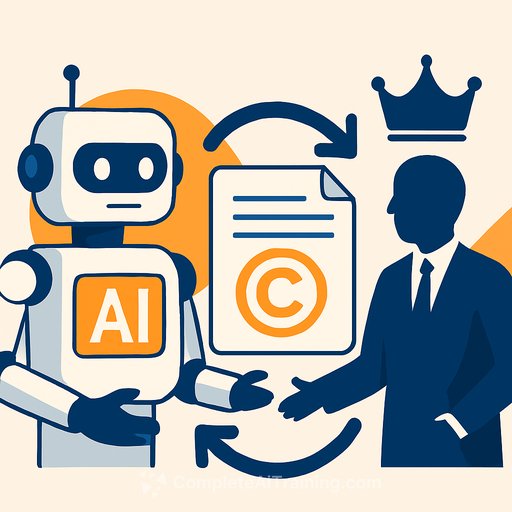Consultants can't sleep at the wheel: AI in government needs real oversight
AI has been pushed into sensitive parts of public service delivery, including eligibility systems. The result? High-profile glitches, delays, and costly rework. The recent case involving a major consultancy issuing a partial refund to Australia's federal government after AI-assisted reporting errors is a warning shot.
Reviewers found non-existent citations and confident claims that collapsed under basic scrutiny. One academic called out "hallucinations." A senator suggested the real issue was human, not machine. That's the point: AI isn't the problem on its own-unchecked AI is.
Why AI trips up (and how to stop it)
Under the hood, large models predict the next token-the tiniest unit of text-based on probabilities. They generate fluent answers, not guaranteed facts. Without strong checks, that fluency can turn into "speculative fiction." In government, that's unacceptable.
What leaders should do now
- Own the outcomes: Don't outsource judgment. Vendors can build and advise, but your team must approve, verify, and sign off.
- Stand up a decision gate: No AI output goes public or into production without human review, traceable evidence, and a clear audit trail.
- Demand evidence: Every claim needs a source you can check. No unverifiable citations. No anonymous "industry studies."
- Log everything: Prompts, model versions, datasets, and changes must be tracked and reproducible.
- Use confidence thresholds: If the system isn't confident-or the stakes are high-route to a human.
Procurement: bake guardrails into the contract
- Transparency pack: Require model cards, data sheets, evaluation reports, and known limitations.
- Quality gates: Define pass/fail criteria for bias, accuracy, security, and explainability before go-live.
- Rights and remedies: Audit rights, incident reporting SLAs, step-in rights, and penalties tied to real service impact.
- Fallbacks: Mandate safe modes and rule-based fallbacks for eligibility decisions if models degrade.
- RACI in writing: Who approves prompts? Who reviews citations? Who signs off on releases? No ambiguity.
Verification before anything leaves the building
- Red-team the system: Actively try to make it fail-facts, legal edge cases, policy nuance, adversarial prompts.
- Check the citations: Spot-audit references. If a link doesn't exist or doesn't say what's claimed, block release.
- Double-review high stakes: For reports, briefings, and public guidance, require two human approvers with domain expertise.
- Keep a change log: Version prompts, templates, and datasets. Roll back fast if quality drops.
Operating AI in production
- Canary rollouts: Start small, monitor, expand only if metrics hold.
- Live monitoring: Drift detection, error rates, rejection reasons, and human overrides on a single dashboard.
- Escalation playbooks: Clear triggers, owners, and timelines when the system misbehaves.
- User feedback loops: Make it easy for staff and citizens to flag issues; feed that back into training and prompts.
Culture and skills
AI doesn't remove the need for judgment. It raises the bar for it. Train teams to verify, challenge, and trace claims-and to know when to say "stop."
- Policy literacy for engineers; technical literacy for policy teams: Build a shared language so reviews are fast and useful.
- Make verification a habit: Treat citation checks and evidence trails like security patches-routine and non-negotiable.
Standards to anchor your approach
Don't start from scratch. Use established frameworks to guide risk, controls, and documentation.
The takeaway for government leaders
AI can help, but only with strong governance, clear contracts, and disciplined verification. If your system starts quoting poetry in a budget forecast, the issue isn't the model-it's the process watching it.
If your team needs practical upskilling in prompt evaluation, evidence checks, and human-in-the-loop design, explore role-based options at Complete AI Training.
Your membership also unlocks:






